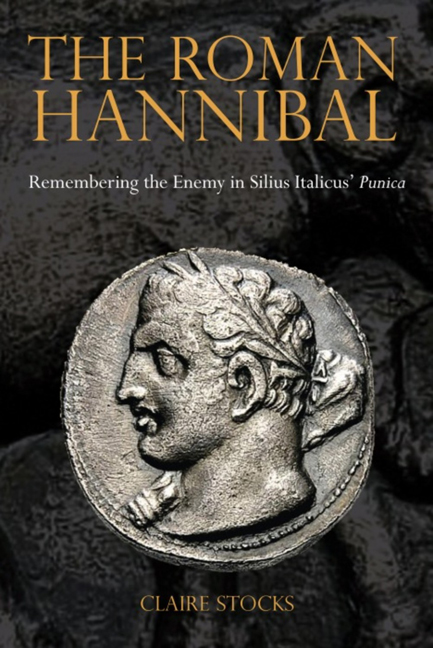Book contents
- Frontmatter
- Contents
- Acknowledgements
- Texts and Translations Used
- Introduction: Silius Italicus and the Roman Hannibal
- Chapter One The Roman Hannibal Defined
- Chapter Two Before Silius: The Creation of the Roman Hannibal
- Chapter Three Silius' Influences
- Chapter Four Epic Models
- Chapter Five Silius' Roman Hannibal
- Chapter Six Out of the Darkness and into the Light
- Chapter Seven Hannibal's Decline after Cannae: Separating Man from Myth
- Chapter Eight Imitators and Innovators
- Chapter Nine Band of Brothers
- Chapter Ten The ‘Lightning Bolts’ (Fulmina) of War
- Chapter Eleven The Man and his Myth: The Self-Defined Roman Hannibal
- Conclusion: The Crossing of the Worlds: The Move from Internal to External Narrative
- Bibliography
- General Index
- Index locorum
Chapter Eleven - The Man and his Myth: The Self-Defined Roman Hannibal
- Frontmatter
- Contents
- Acknowledgements
- Texts and Translations Used
- Introduction: Silius Italicus and the Roman Hannibal
- Chapter One The Roman Hannibal Defined
- Chapter Two Before Silius: The Creation of the Roman Hannibal
- Chapter Three Silius' Influences
- Chapter Four Epic Models
- Chapter Five Silius' Roman Hannibal
- Chapter Six Out of the Darkness and into the Light
- Chapter Seven Hannibal's Decline after Cannae: Separating Man from Myth
- Chapter Eight Imitators and Innovators
- Chapter Nine Band of Brothers
- Chapter Ten The ‘Lightning Bolts’ (Fulmina) of War
- Chapter Eleven The Man and his Myth: The Self-Defined Roman Hannibal
- Conclusion: The Crossing of the Worlds: The Move from Internal to External Narrative
- Bibliography
- General Index
- Index locorum
Summary
Chapters five to eight focused on how Silius presents his reading of the Roman Hannibal: showing how by virtue of his actions the man achieved a mythic status for himself that was sustained by the spectatorship of, and subsequent reporting by, others. The focalisation of other characters forms the basis to Silius’ Roman Hannibal, but the character of Hannibal himself is also vocal in the creation of his legacy. In earlier chapters we have noted instances where we can see this Hannibal perspective at work, notably in scenes where he is focused on his family and the familial legacy, so assuming an epic role as he becomes like another Hector, an anti-Aeneas and a Pompey. For this final chapter, however, I propose to look in detail at four episodes from the Punica in which the focalisation of Hannibal has a significant impact upon the reading of the Roman Hannibal that Silius’ epic presents and, by extension, the place that the Punica holds among Rome's other literary portrayals of him. These are scenes where Hannibal, in defining his own legacy, offers his own reading of what it means to be ‘Hannibal’ and hence his own reading of the Punica.
Books 1 and 3: Choosing Hercules as a role model
First to Book 1 and the battle for Saguntum; here Hannibal comes face-toface with Murrus and his speech reveals the individual whom he most wishes to emulate: Hercules. Murrus himself had already made an appeal to Hercules: conditor Alcide, cuius uestigia sacra/ incolimus terra, minitantem auerte procellam,/ si tua non segni defenso moenia dextra (‘Hercules, our founder, whose sacred imprint we inhabit in this land, turn away the storm that threatens, if I defend your walls with a right hand not lazy’, 1.505–7). But Hannibal dismisses these words and attempts to assimilate Hercules with his own identity, shifting the focus from the Tirynthian's role as a founder of cities, to that of a destroyer:
‘cerne’, ait ‘an nostris longe Tirynthius ausis iustius affuerit. ni displicet aemula uirtus, 510 haud me dissimilem, Alcide, primoribus annis agnosces, inuicte, tuis. fer numen amicum et, Troiae quondam primis memorate ruinis, dexter ades Phrygiae delenti stirpis alumnos’.
- Type
- Chapter
- Information
- The Roman HannibalRemembering the Enemy in Silius Italicus’ Punica, pp. 218 - 230Publisher: Liverpool University PressPrint publication year: 2014

